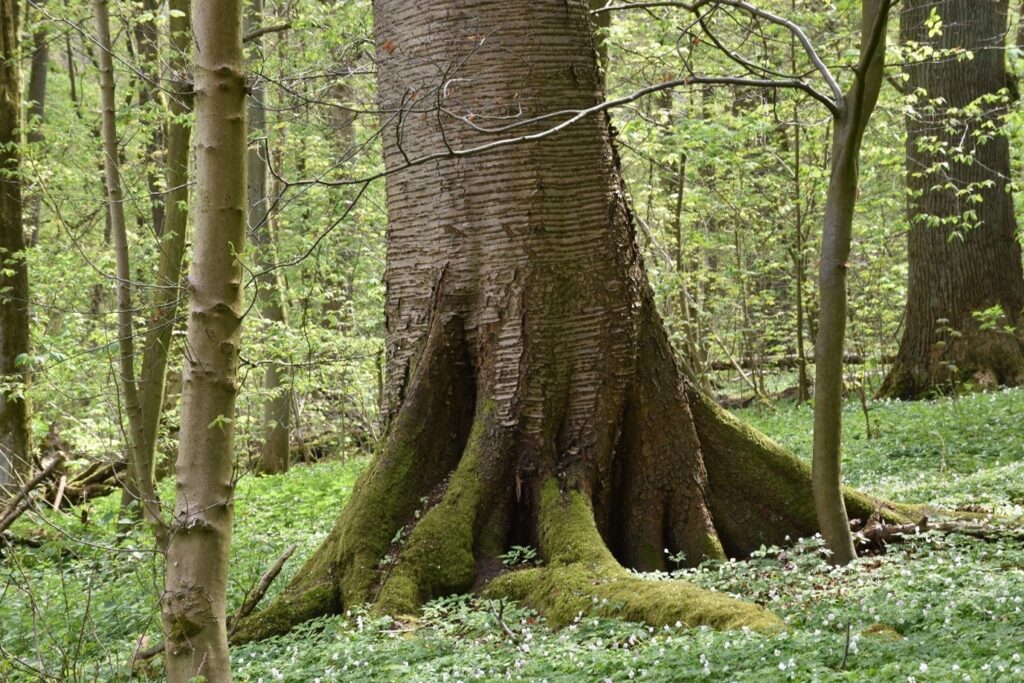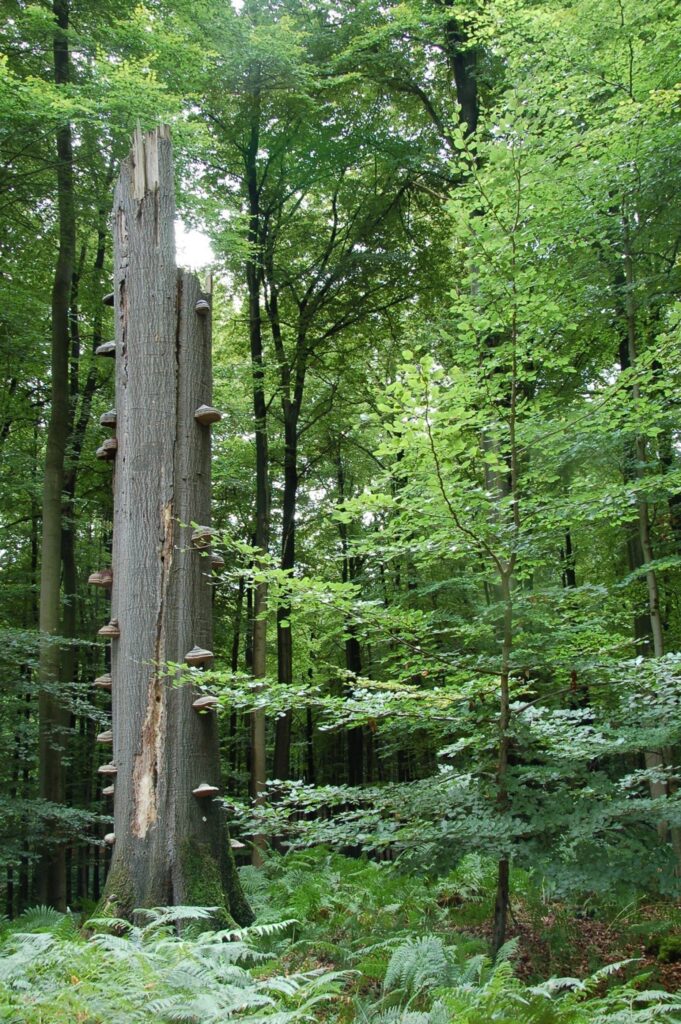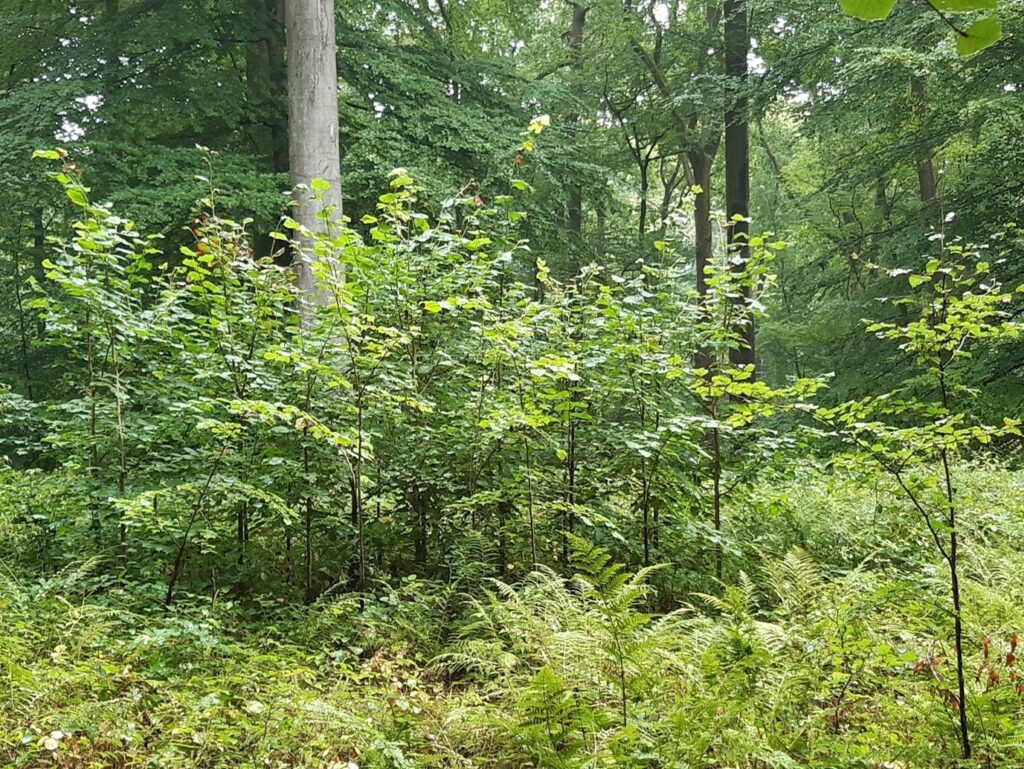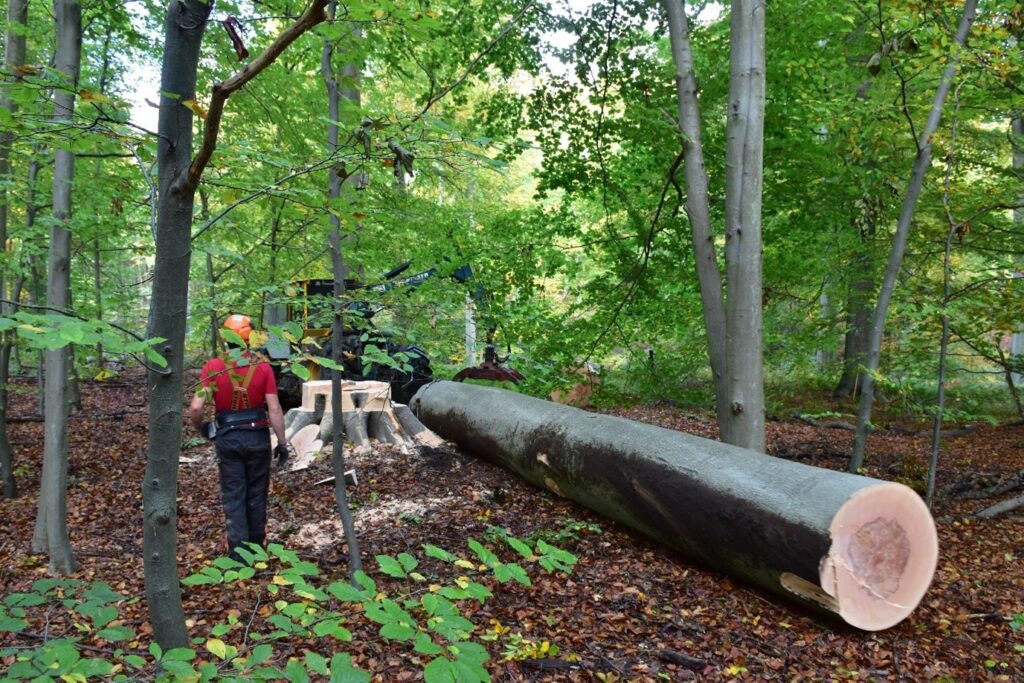Small scale forestry or single tree selection system as basis of a continuous cover forestry in order to realize a better habitat quality and more resilient tree stands.
In order to maintain an intact forest microclimate, clearcuts and group selection cuts have been abandoned in the Sonian forest. The management of a continuous cover forestry implies a single tree selection system. Mature trees are harvested individually without making gaps bigger than the horizontal projection of one tree crown when harvested. Young qualified trees are individually selected and tendering is being executed only in favor of these qualified trees.
The forest microclimate is essential for the amelioration of the state of conservation of all the forest N2000 habitats, to diminish the effects of climate change, to avoid invasive species to develop and to qualify young trees (naturally regenerated or planted).
Figure 1 (on top of the article): An individually harvested beech tree.

Heliophile tree species like sessile oak need more attention in this single tree selection system especially at a young age. Gradually lowering the basal area of beech dominated stands will make it possible to convert these stands into a mix of heliophile tree species.
The state of conservation of the Unesco world heritage sites in the heart of the Sonian forest (“Ancient and primeval beech forests of the Carpathians and other regions in Europe”) will not be affected negatively.
The state of conservation of N2000 habitats will be positively affected by developing multilayered stands and mixing tree species, together with retention of dead wood and habitat and windthrown trees.

Maintaining the actual number of very large trees (VLT=trees with DBH>80cm), actually 6 VLTs/ha, will force the managers to collect sufficiently enough data of these VLTs, will impact the harvest and harvest rate of harvestable trees, and will encourage the carbon sink effect of the Sonian forest. Actually all VLTs of oak are considered as habitat trees, all VLTs of beech with a DBH>100cm are considered as habitat trees. These habitat trees will never be harvested and evacuated from the forest.
The continuous cover forestry is often less shocking than clearcuts and more easily accepted by the public visiting the Sonian forest.
Continuous cover forestry is a rather easy management system with beech (the dominant tree species in the Sonian forest) and other shade tolerant species like hornbeam, maples and lime trees. Mixing beech with these indigenous species makes these stands more resilient and ecologically more interesting. Planting young trees in a continuous cover system is done by introducing small groups of about 30 young trees in circular plots with a maximum diameter of 8 meters. This kind of regeneration imitates natural regeneration in a single tree selection system where mature trees have been harvested.

Text and images: Frederik VAES
Engineer – Department head, Bruxelles Environnement – Leefmilieu Brussel

